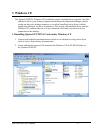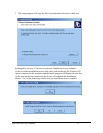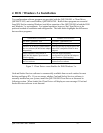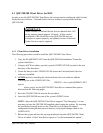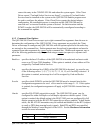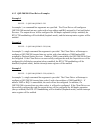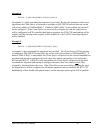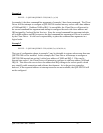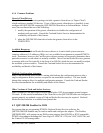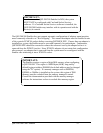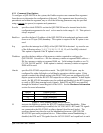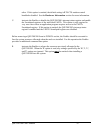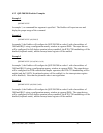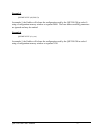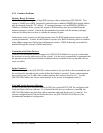
Example 6
DEVICE = C:\QSP-200\QSP200CL.SYS (b300,i5) ( ) (i10)
In example 6, the three command line arguments of example 5 have been rearranged. The Client
Driver will first attempt to configure a QSP-200/300 inserted into any socket with a base address
of 300H and IRQ 5. If address 300H or IRQ 5 is unavailable, the Client Driver will proceed to
the second command line argument and attempt to configure the card with a base address and
IRQ assigned by Card and Socket Services. Since the second command line argument includes
all available address and IRQ resources, the third command line argument will never be reached
by the Client Driver. It is the user's responsibility to place the command line arguments in a
logical order.
Example 7
DEVICE = C:\QSP-200\QSP200CL.SYS (s0,b300,i5) (s1,b340,i10,o1)
The type of configuration shown in example 7 may be desirable in systems where more than one
QSP-200/300 is to be installed. In this example, the Client Driver will attempt to configure a
QSP-200/300 inserted into socket 0 with a base address of 300H and IRQ 5. If the card is
inserted into socket 1, the Client Driver will attempt to configure it with base address 340H and
IRQ 10. This allows the user to force the address and IRQ settings to be socket specific which
may simplify cable connections and software development. As in the previous examples,
however, if the requested address or interrupt resources are not available, the QSP-200/300 will
not be configured.
QSP-200/300 User's Manual 21



